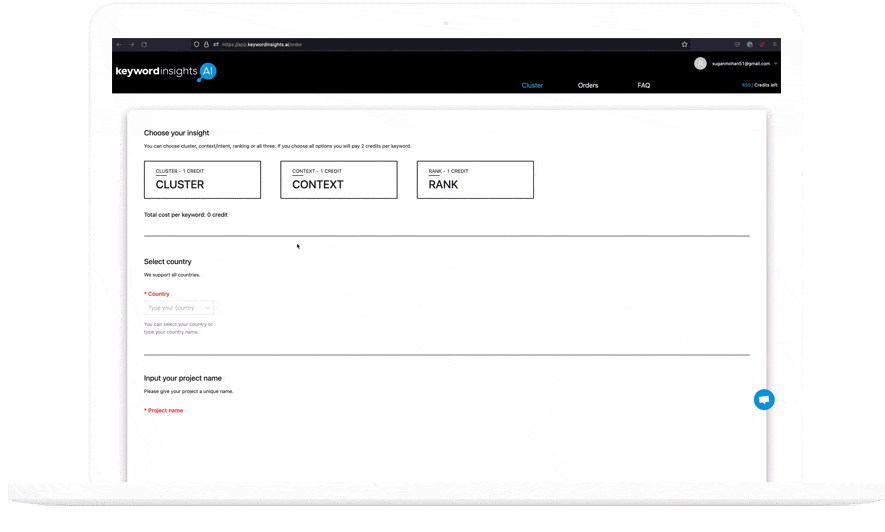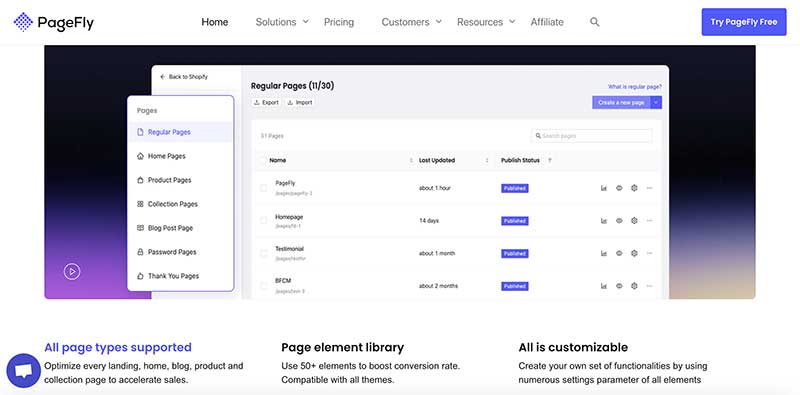Okay, let’s start with the obvious: If you’re selling a product, you want to reach as many potential customers as possible.
However, here’s the big caveat, marketing convention tells you to hone in on one particle niche, one particular audience with one particular need. That’s where you start your business right?
But what if your product does appeal to multiple niches? How do you market it effectively to each one? This is where product framing comes in.
In the following article I’m going to share with you the process I use with my clients to help them consider how to retain a niche focus, but introduce products to a wider audience. Creating landing pages focused on a specific context (niche) that rank, resonate and convert to help you grow organically and sell to a wider audience than the traditional ‘focus on one niche’ viewpoint. Your work is fuelled by customer insights. I’ll talk you through exactly how you gain the right insights to frame your products for specific targetted audiences.
Table of Contents
What is product framing?
Product framing is a marketing strategy that involves presenting your product in a way that appeals to different niches. By highlighting different features or benefits that are relevant to each niche, you can increase the appeal of your product and reach a wider audience.
For example, let’s say you’re selling a fitness tracker. You could frame it as a tool for athletes who want to track their performance and improve their training. But you could also frame it as a tool for busy professionals who want to track their activity levels and improve their health. By using different messaging and targeting different niches, you can maximise the potential of your product.
Understanding Product Framing
When it comes to selling your products across multiple niches, understanding product framing is crucial. Product framing is the process of positioning your product in a way that appeals to different target audiences, without changing the core features of the product itself.
To do this effectively, you need to identify the key benefits of your product and how they can be translated into different contexts. For example, if you sell a fitness app, you could frame it as a weight loss tool for one audience and as a strength training app for another.
Product framing requires a deep understanding of your target audiences and their needs. This is why you need to ensure you’re collecting customer insights each step of their journey.
- Running Klaviyo popups? Add data collection to discover how your customer intends to use your product.
- Running post purchase surveys? Ask customers why they bought the product they did. What’s their current situation and the outcome they’re looking for?
- Asking for reviews? Don’t just ask for 5 stars. Ask them a series of questions to better understand their product use. Junip is a brilliant review platform that allows you to do this with ease
- Analysing keyword data? Cluster your data and spot trends in the context behind what people search. KeywordInsights is the best tool for keyword clustering allowing you to do this.
At the foundation of your SEO strategy is the ability to understand the keywords and search queries that your potential customers are using.
- Ever run a performance report on Google Search Console?
- Pulled data from a source such as SEMRush or AHREFS?
you can quickly become overwhelmed by keyword data.
Enter KeywordInsights. KeywordInsights.ai is a tool created to help you cluster data (pull unique search keyword data into usable categories). This then sits central to your content strategy as you begin creating landing pages to educate customers and introduce your products. It's a super smart tool I'd highly recommend to anybody tasked with driving organic ecommerce growth.
You need to be able to identify their pain points and how your product can solve them. This will enable you to create messaging that resonates with each audience.
To help you frame your product effectively, consider the following tips:
- Conduct market research (see above) to understand your target audiences and their needs.
- Identify the key benefits of your product and how they can be translated into different contexts.
- Use language that resonates with each audience, highlighting the benefits that are most relevant to them.
- Consider creating different versions of your product for different niches, with tailored messaging and features.
By understanding product framing, you can sell your products to multiple niches without diluting your brand or changing the core features of your product. It requires a strategic approach, but the rewards can be significant.
Identifying Your Niche Markets
When it comes to selling your products across multiple niches, it’s important to identify your target markets. This will help you tailor your marketing efforts and ensure that your products are reaching the right people. Here are a few steps you can take to identify your niche markets:
Market Research
The first step in identifying your niche markets is to conduct market research. This involves gathering information about your target audience, including their demographics, interests, and buying habits. Some methods you can use to conduct market research include:
- Surveys
- Focus groups
- Social media analytics
- Website analytics
By conducting market research, you can gain valuable insights into your target audience and use this information to develop targeted marketing campaigns.
Customer Segmentation
Once you have a better understanding of your target audience, you can begin to segment your customers based on their needs and interests. This involves grouping customers together based on shared characteristics, such as age, gender, location, or buying behaviour.
By segmenting your customers, you can tailor your marketing efforts to each group and create targeted campaigns that resonate with their specific needs and interests. This can help you increase engagement and sales, as well as build stronger relationships with your customers.
Overall, identifying your niche markets is an important step in selling your products across multiple niches. By conducting market research and customer segmentation, you can develop targeted marketing campaigns that resonate with your target audience and drive sales.
Product Framing Techniques
When it comes to selling your products across multiple niches, product framing is an essential technique that can help you tailor your message to your target audience. Here are some product framing techniques that you can use to sell your products effectively:
Value Proposition
Your value proposition is a statement that explains what your product does, who it’s for, and why it’s better than your competitors. To create a compelling value proposition, you need to understand your target audience and their pain points. Here are some tips to help you create a strong value proposition:
- Identify your target audience and their needs
- Highlight the benefits of your product
- Use clear and concise language
- Differentiate your product from your competitors
Storytelling Through Landing Pages
Storytelling is a powerful technique that can help you connect with your audience on an emotional level. By telling a story, you can help your audience understand how your product can solve their problems and improve their lives. Specific to them. Here are some tips to help you tell a compelling story:
- Identify the problem that your specific audience is facing (you know this through your research)
- Introduce your product as the solution
- Use real-life examples and case studies (again in the context of your reader. Selling candles for lounges suffering from the smells of dogs and kids is a very different context to a bedroom)
- Highlight the benefits of your product
Visual presentation of your landing pages
Visual presentation is an important aspect of product framing. By using the right images, colours, and fonts, you can create a visual identity that resonates with your target audience. Here are some tips to help you create an effective visual presentation:
- Use high-quality images that reflect your products in context (think waterproof jackets for dads on the sidelines vs waterproof jackets for downpours at beach)
- Choose colours that evoke the right emotions
- Use headline copy that drags your reader in
- Keep your design mobile-first… clean and uncluttered
By using these product framing techniques, you can create a message that resonates with your target audience and helps you sell your products effectively.
Creating Landing Pages That Achieve Product Framing
Here’s a good example of a scenario where product framing creates impact.
Heights is a UK supplement brand. The market opportunity is vast, but creating context (through storytelling) has allowed Heights to target a specific niche of customers… company founders;

creating new landing pages isn’t difficult. WooCommerce stores have this covered with ease through creating new pages. Shopify stores, if you haven’t created landing page templates within your theme, then head over to a tool like PageFly (super simple to use and gives you the option to integrate your store header and footer for a clean integration. Replo is another brilliant tool for creating dedicated landing pages. Drag and drop functionality means you can create mobile-first landing pages with a huge range of integrations (so you can automate the inclusion of product reviews as an example) and page layouts.
Technology should not hinder your ability to frame your products for specific niches.
You can now create unlimited pages and blogs for your Shopify store without the restrictions of your store template designs. Build using Pagefly's build in templates or create a new mobile-friendly design with ease using the dozens of widgets and integrations available to you within Pagefly.
It's a super easy app to get the hang of and will save you hours of frustration with the freedom to build as you want. No need for developers or design resources, from just $24 a month you can get started building new content in your Shopify store today.
Adapting Product Framing Across Niches
When you are selling a product across multiple niches, it is important to adapt your product framing to meet the needs of each niche. Here are two key ways to adapt your product framing to reach different audiences.
Customising Messaging
One way to adapt your product framing is by customising your messaging to meet the needs of each niche. This means tailoring your product descriptions, benefits and features to appeal to the specific interests and needs of each niche.
For example, if you are selling a skincare product across multiple niches such as teenagers, young adults and older people, you might emphasise different benefits of the product for each group. For teenagers, you might emphasise the product’s ability to prevent acne and reduce oily skin. For young adults, you might emphasise the product’s anti-aging benefits. For older people, you might emphasise the product’s ability to reduce wrinkles and improve skin elasticity.
Diversifying Marketing Channels
Another way to adapt your product framing is by diversifying your marketing channels. This means using different channels to reach different audiences, such as social media, email marketing, paid advertising, and influencer marketing.
For example, if you are selling a fitness product across multiple niches such as bodybuilders, runners, and yoga enthusiasts, you might use different marketing channels to reach each group. For bodybuilders, you might use paid advertising on bodybuilding forums and social media channels. For runners, you might use influencer marketing with popular running bloggers and social media influencers. For yoga enthusiasts, you might use email marketing to reach subscribers of yoga newsletters and blogs.
By customising your messaging and diversifying your marketing channels, you can adapt your product framing to meet the needs of each niche and increase your chances of success.
Measuring the Success of Product Framing
When it comes to measuring the success of product framing, there are two key areas to focus on: sales metrics and customer feedback.
Sales Metrics
One of the most obvious ways to measure the success of your product framing is by looking at your sales metrics. This includes metrics such as:
- Conversion rates
- Average order value
- Revenue
- Profit margins
By tracking these metrics over time, you can get a good sense of how your product framing is impacting your sales. For example, if you see an increase in conversion rates or average order value after implementing a new product framing strategy, it’s a good sign that your approach is resonating with customers.
Customer Feedback
Another important way to measure the success of your product framing is by gathering customer feedback. This can include:
- Surveys
- Reviews
- Social media comments
- Customer support interactions
By listening to what your customers are saying, you can get a sense of how they perceive your products and whether your framing is resonating with them. For example, if you see a lot of positive reviews or social media comments about a particular aspect of your product framing, it’s a good indication that it’s working well.
It’s important to note that customer feedback can be subjective, so it’s important to take a holistic approach and not rely solely on a few comments or reviews. However, by gathering feedback from a variety of sources and looking for patterns, you can get a good sense of how your product framing is resonating with your target audience.
Overall, measuring the success of your product framing requires a combination of quantitative and qualitative data. By tracking sales metrics and gathering customer feedback, you can get a good sense of how your approach is impacting your bottom line and how your target audience is responding to your products.
Getting started
Product framing is a powerful strategy to sell your products across multiple niches. By identifying the core benefits of your product and framing them in a way that resonates with different audiences, you can expand your customer base and increase your sales.
Remember to start by defining your target audience and understanding their needs and pain points. Use this information to create a value proposition that speaks directly to them. Then, identify the key benefits of your product and frame them in a way that highlights their relevance to each audience.
Throughout the process, it’s important to keep testing and refining your framing to ensure that it’s resonating with your target audiences. This may involve tweaking your messaging, adjusting your marketing channels, or even pivoting your product offering.
Ultimately, product framing is a dynamic and ongoing process that requires a deep understanding of your customers and their needs. By staying focused on their needs and constantly refining your approach, you can create a product that resonates with multiple niches and drives sustainable growth for your business.



